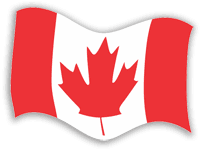
#13 The Conservative Party
by Robert Bothwell
| In Canada there were politicians before there were parties, and
the parties go back before there was Canada. Canada’s
Conservative party was one of the first, starting out in the
1840s. By 1848, it was understood and accepted that any group
that could form a majority in any colonial legislature or
parliament would form the government of that colony, and
politicians began to come together to secure and keep power. The
colonial politicians naturally adopted British terms for their
political formations, Conservative and Liberal, after the great
British parties. The followers of John A. Macdonald in Upper
Canada identified themselves as Conservatives, but when
Macdonald formed a coalition with the Liberals to get
Confederation passed, the result was called the
Liberal-Conservative party. The Liberal-Conservative party was, obviously, a national party. It stood for the union of the Canadian provinces, and a very strong federal power. Accordingly, the Conservatives (the Liberal half of the name gradually slipped away) stood for great projects of national development, especially the transcontinental railway and for a high tariff on imported goods. Macdonald proved a gifted leader, whose charm and firmness kept his followers in line; most important, Macdonald won elections. He was not shy about the means — if people or companies expected to benefit from his government, they should contribute to its success. Those who helped the party could expect favours from the government — patronage. On one occasion, in 1873, Macdonald went too far even for the elastic standards of the day, but he was back next election. Indeed, he won four in a row, 1878, 1882, 1887 and 1891, still a record. Macdonald practically invented the formula for winning elections in Canada. A successful party must appeal to both French and English Canadians, and Macdonald was consistently successful in winning votes and seats in Quebec. He was not ideological — if his opponents did one thing, Macdonald would do the opposite, but so skilful was his management that most voters did not care. Unfortunately his charm died with Macdonald in 1891. The Conservatives, still in power, had four prime ministers in five years, and lost in 1896. Robert Borden, the party’s leader after 1900, had difficulty finding a formula for success, but eventually, in 1911, he did: running on one platform in French Canada and on another in English Canada. Though Borden successfully led Canada through the First World War, he had to impose conscription, and that hurt his party for the next 40 years, especially in Quebec. Borden lost French Canada; his successor in 1920, Arthur Meighen, lost the West. From the election of 1921 through the election of 1953, and under many leaders, the Conservatives were mainly based in southern Ontario. Only once, in 1930, did the Conservatives win enough seats to form a government, but their leader, R.B. Bennett, though a man of high intelligence, held office through the 1930s Depression and were chased from office in 1935. Not until 1957 did the Conservatives (by then called the Progressive Conservatives) return to office under John Diefenbaker. Diefenbaker was a marvelous orator, but he was no party leader. After winning in 1957 and 1958, his party lost office in 1963. Quebec, which had voted Conservative in 1958, did not for the next 20 years. However, Diefenbaker did attract the West, which after 1962 became the Conservative stronghold. The Conservative party of the 1960s, 1970s and 1980s was not fundamentally different from its Liberal opponents. Broadly speaking, both parties were committed to the welfare state, to Canada’s place in the Western alliance and to a balance between free enterprise and state supervision in economic policy. The brief Joe Clark Progressive Conservative minority government in 1979 did not have time to develop a style of its own, for it was defeated in the 1980 election. The next Progressive Conservative prime minister, Brian Mulroney, was more successful, winning a huge victory in 1984. Mulroney governed vigorously, renovating the tax system, strengthening ties with the U.S. and bringing about a free trade agreement with that country in 1987. But Mulroney failed to “fix” the Canadian constitution, and he overstayed his welcome. He offended the West by favouring Quebec and offended Quebeckers by failing on the constitution. Losing Quebec and the West, the Conservative party was reduced to two seats in the election of 1993. Mulroney’s actions led a group of westerners to form the Reform party, which competed directly with the Conservatives in several elections until finally, in 2003, the two parties reunited under Stephen Harper. Harper’s party differed sharply from its Liberal opponents and won in the elections of 2006 and 2008. However, in neither election did Harper achieve a parliamentary majority, which meant that he governed cautiously. How the Conservatives and Harper will fare is an open question, but it is a safe bet that the party will continue to be one of the dominant forces in Canadian life. Next Instalment: The Liberal Party The Canadian Experience is a 52-week history series designed to tell the story of our country to all Canadians. Sponsored by Multimedia Nova Corporation and Diversity Media Services/Lingua Ads partners, the series features articles by our country’s foremost historians on a wide range of topics. Past articles and author bios are available at http://www.cdnexperience.ca. The Canadian Experience is copyright © 2010-2011 Multimedia Nova Corporation |
List of published "Canadian Experience" articles |
The Canadian Experience communicates to
us about the many facets of Canada, the people, the Charter, brings us
reality and creates understanding.
Copyright ©2010 Echoworld Communications. All rights
reserved

